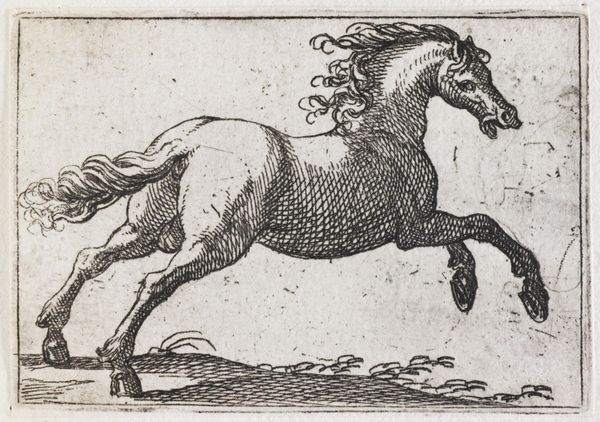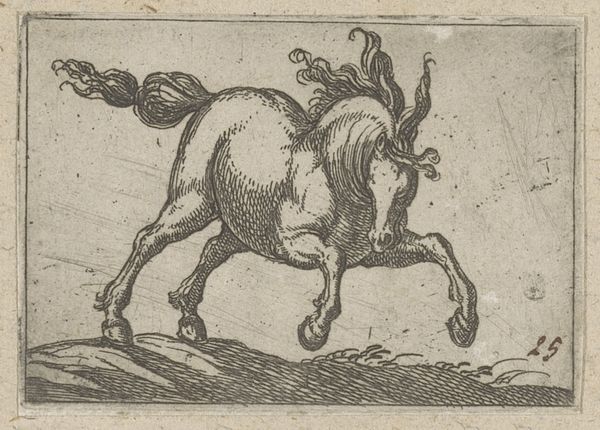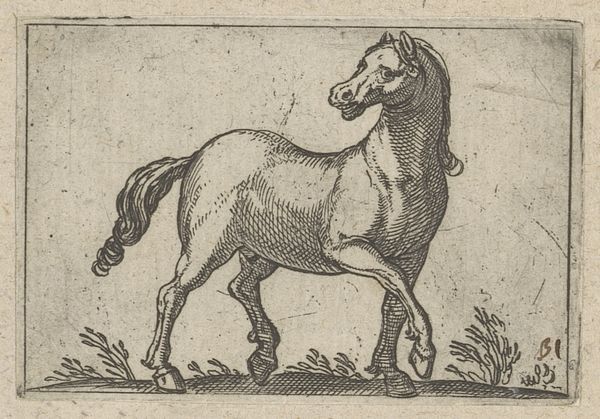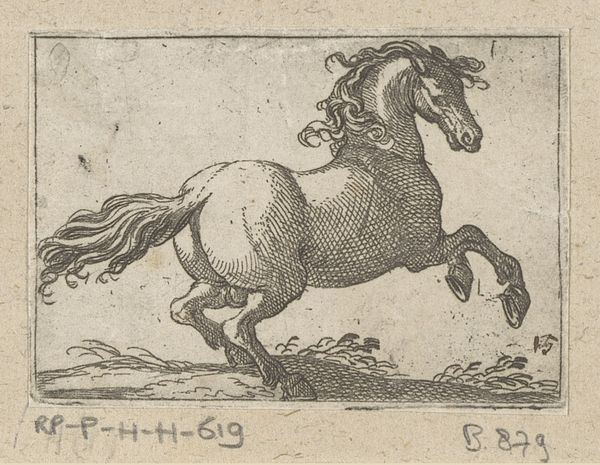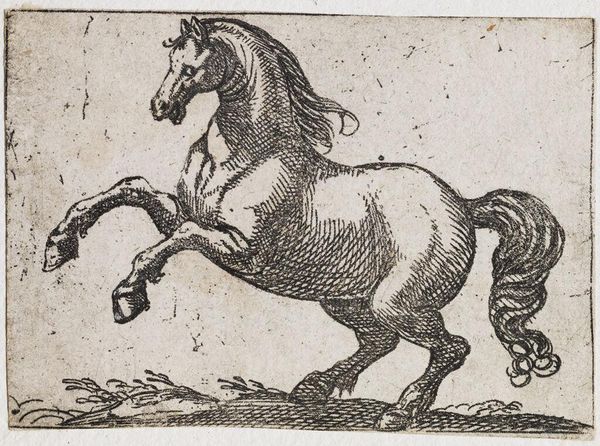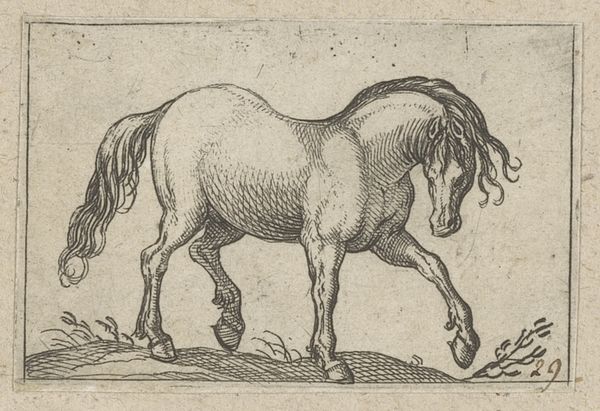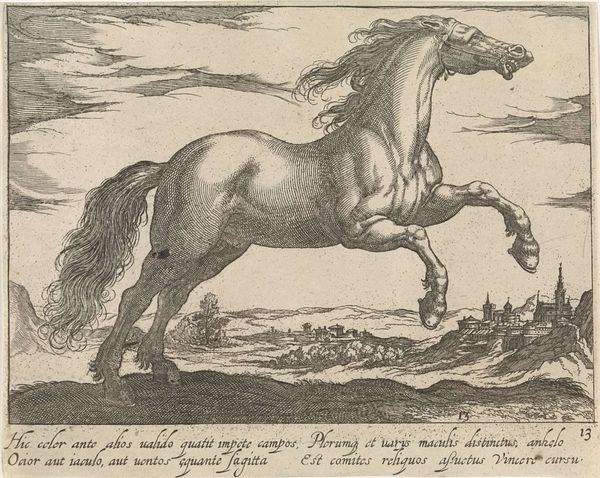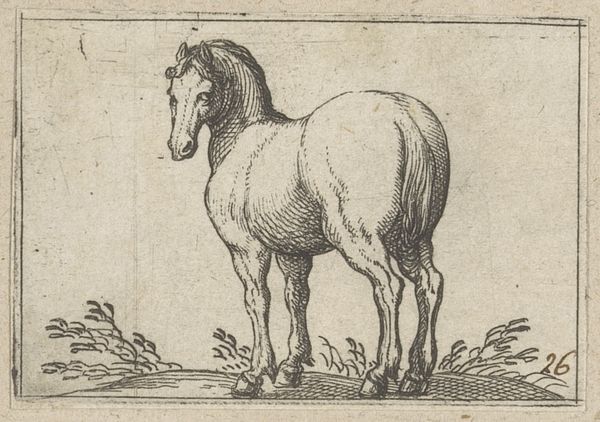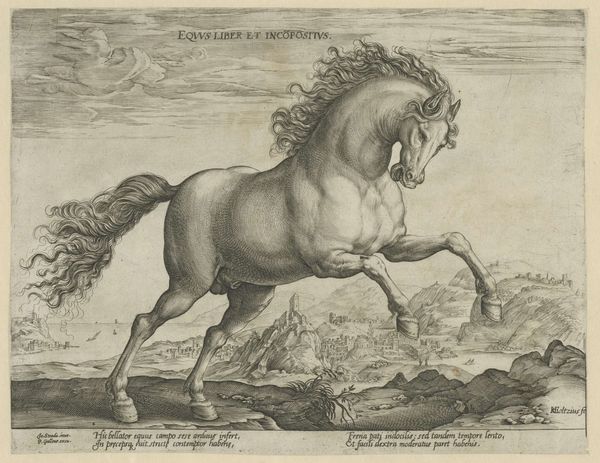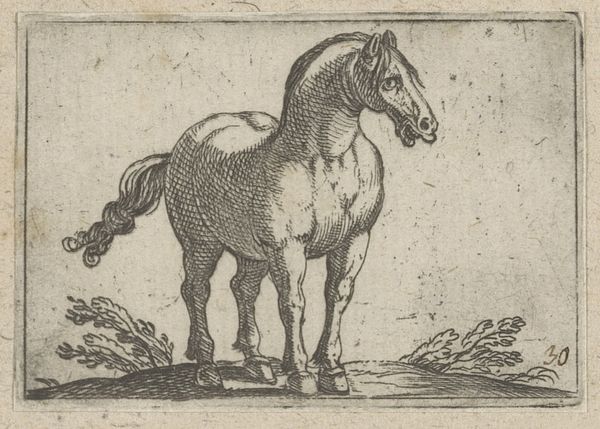
print, etching
#
baroque
# print
#
etching
#
landscape
#
figuration
#
horse
Dimensions: height 45 mm, width 66 mm
Copyright: Rijks Museum: Open Domain
Curator: Here we have an etching, likely made between 1565 and 1630, entitled "Steigerend paard naar links gewend," which translates to "Rearing Horse Facing Left." It is attributed to Antonio Tempesta, and what a powerful, spirited creature he's captured. Editor: Yes, the moment I saw this image, I felt the horse's contained energy. The way it's rearing, almost like a dance move, evokes something about control, but there is so much repressed wildness in its eyes, or perhaps readiness is a better way to define it. The intricate lines create a sort of textural map of its musculature. Curator: Precisely! Tempesta was masterful in capturing that raw animal vitality. This print speaks volumes about the symbolism of the horse—strength, nobility, freedom, and of course, untamed passion. Do you feel any connection with mythological symbolism or, even, perhaps heraldry? Editor: The cross-hatching almost gives it the air of being captured in a net, but this doesn’t lessen his visual majesty at all. The symbolism you mentioned calls forth images of royal standards and the battlefield. He has almost too elegant musculature; there is very little suggestion of strain. So the symbolism seems to overpower reality here. Curator: And think of its original context. Printmaking in the late 16th and early 17th centuries allowed for the widespread dissemination of images. Prints like these could serve as models for other artists, circulate ideas about animal anatomy and equestrian skill, and generally stir the artistic pot. What strikes me is, the animal looks confident and relaxed; this attitude and the relatively peaceful setting combine in an unexpected way. Editor: That relaxed confidence is compelling. You’re absolutely right. It disrupts any traditional heroic narrative we might expect from such a stance. It’s a proud declaration without any war cry. Considering the wider Baroque sensibility, that merging of the ideal with the everyday adds layers to what this horse means. Curator: I agree entirely. It’s a fascinating piece, showcasing not just artistic skill but also a shifting cultural perception of the role of animals—especially horses—in art and society. What a steed, eh? Editor: Definitely—a fine glimpse into a particular moment, elegantly framed for the future! I think there is a reason to consider art made for wider dissemination differently: its purpose, the goal the artists pursue with these media is something to take into account, perhaps more than usual.
Comments
No comments
Be the first to comment and join the conversation on the ultimate creative platform.
